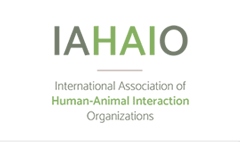Abstract
Background: Despite claims that animal-assisted therapy is beneficial, there is limited empirical evidence supporting this. Current literature supports the physical, emotional, and psychological benefits an animal can provide, but few studies have explored the outcomes of incorporating an animal into skilled treatment facilitated by a healthcare professional. This study seeks to explore the effects of animal-assisted therapy in outpatient pediatric occupational therapy practice.
Purpose: The purpose of this research is to explore the meaningfulness and motivation animal-assisted therapy interventions provide for pediatric clients when compared with traditional occupational therapy treatment.
Methods: Researchers utilized a within-participants repeated-measures design for this study. Children receiving animal-assisted therapy at a private practice occupational therapy clinic were videoed performing therapeutic activities with a licensed occupational therapist and trained dogs. The videos were gathered both with and without the animal present in the therapy session and coded to determine the meaningfulness and motivation of animal-assisted therapy versus traditional therapy without a dog.
Results: Statistical analysis indicated that the childrens’ scores for initiating interactions with the therapist were significantly higher in the without dog condition than in the live dog condition. Furthermore, four out of the five children demonstrated increased on task/dog comments in the live dog condition than in the stuffed dog condition. The specific intervention activity performed influenced children’s engagement and enjoyment of animal-assisted therapy interventions.
Conclusion: This pilot study provides preliminary evidence that animal-assisted therapy increases children’s enjoyment and engagement during therapeutic activities when a dog was present. Furthermore, the type of animal-assisted therapy activity performed may influence the children’s motivation to participate.
Recommended Citation
Laskowski, Beth; Winkle, Melissa Y.; and Lucas Molitor, Whitney
(2019)
"The Meaning and Motivation of Children Participating in Animal-Assisted Therapy: A Pilot Study,"
People and Animals: The International Journal of Research and Practice: Vol. 2
:
Iss.
1,
Article 1.
Available at:
https://docs.lib.purdue.edu/paij/vol2/iss1/1


